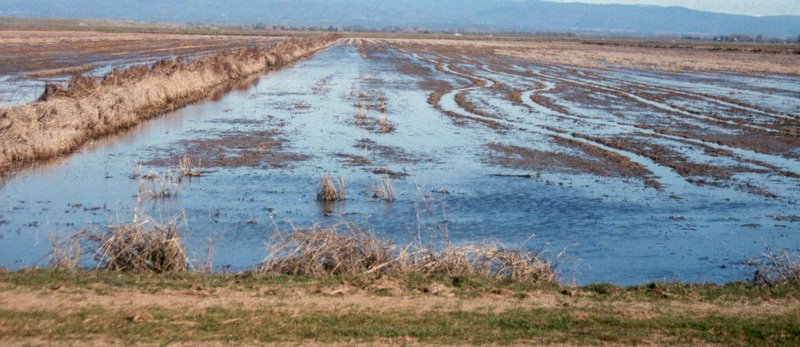Wetlands provide important habitat for ducks, geese and other water birds. They help to slow flooding and cleans our waters, yet our beloved wetlands and waterfowl habitat are slipping away. The latest U.S. Fish and Wildlife Service report indicates that America’s wetlands declined slightly from 2004 to 2009, reiterating the need for continued conservation and wetland habitat management. In short, the trend is staying the same; previous reports have documented a continuous, but diminishing, decline in wetland and waterfowl habitat.
The report, which represents the most up-to-date, comprehensive assessment of wetland and waterfowl habitat in the United States, documents substantial losses in forested wetlands (swamps) and coastal wetlands that serve as storm buffers, absorb pollution that would otherwise find its way into the nation’s drinking water, and provide vital habitat for America’s fish, wildlife and plants.

“Wetlands are at a tipping point,” said Secretary of the Interior Ken Salazar. “While we have made great strides in conserving and restoring wetlands since the 1950s when we were losing an area equal to half the size of Rhode Island each year, we remain on a downward trend that is alarming. This report, and the threats to places like the Mississippi River Delta, should serve as a call to action to renew our focus on conservation and restoration efforts hand in hand with states, tribes and other partners.”
The net wetland habitat loss was estimated to be 62,300 acres between 2004 and 2009, bringing the nation’s total wetlands acreage to just over 110 million acres in the continental United States, excluding Alaska and Hawaii. The rate of gains from reestablishment of wetland habitat increased by 17 percent from the previous study period (1998 to 2004), but the wetland loss rate increased 140 percent during the same time period. As a consequence, national wetland losses have outpaced gains.
The net loss includes a combination of gains in certain types of wetlands and losses in other types, especially forested wetlands.
“In a five year period, we lost over 630,000 acres of forested wetlands, mostly in the Southeast. This is an area equal to half a million football fields each year,” Director Ashe said. “We should all be concerned about the substantial loss of this diminishing resource, which helps ensure good water quality for local communities and provides vital wildlife habitat for a diversity of important animal species.” The southeast United States, primarily freshwater wetlands of the Atlantic and Gulf coastal plain, and the Lower Mississippi River experienced the greatest losses.
Wetlands provide a multitude of ecological, economic and social benefits. They provide habitat for fish, wildlife, and a variety of plants. Wetlands are nurseries for many saltwater and freshwater fishes and shellfish of commercial and recreational importance, such as wildlife viewing, duck hunting and kayaking. Wetlands are also important landscape features because they hold and slowly release flood water and snow melt, recharge groundwater, act as filters to cleanse water of impurities, recycle nutrients, and provide recreational opportunities for millions of people. Wetland conservation and wetland management have been talked about for decades, maybe it’s time we get to work on reversing the trend.